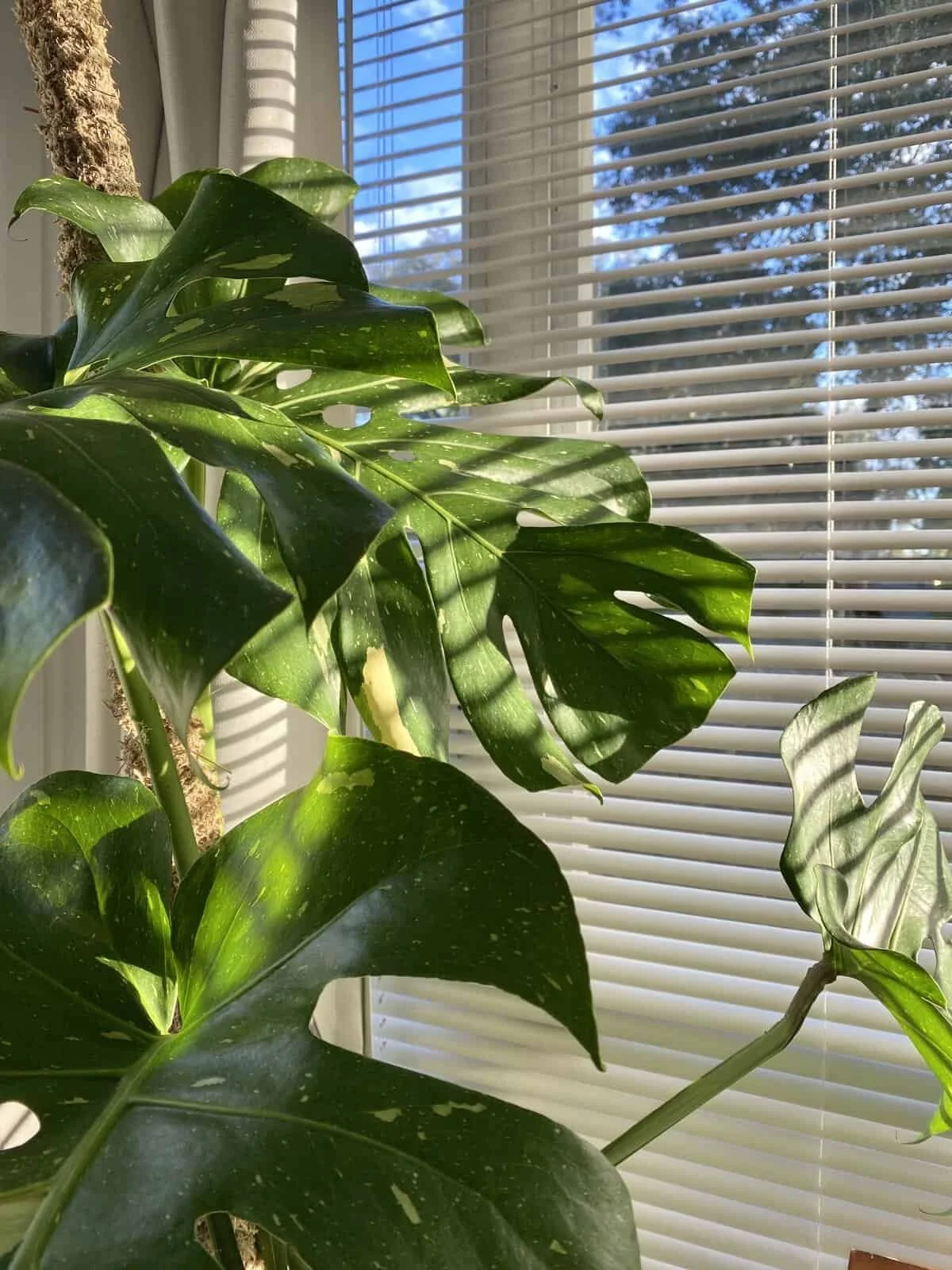Thai Constellation Monstera Plant Profile
Monstera Deliciosa ‘Thai Constellation’
The first time I saw a photo of the Thai Constellation Monstera, I absolutely fell in love. Their color variations remind me of an abstract watercolor painting. I knew that I wouldn’t be able to afford one right away, so I would enjoy them from a distance and continue pinning photos and doing research until I could.
Thai Constellation Monsteras have the same basic needs as their mother plant, the Classic Monstera Deliciosa, but are more delicate and require some attention to detail.
In this post, I’ll be sharing tips for optimal care so you can feel confident adding this beautiful plant to your collection. We’ll look at:
How to Care for the Thai Constellation Monstera
Sunshine Requirements
How to Achieve Ideal Humidity
Soil Type
Watering Frequency
Fertilizer Requirements
Care
Sunshine Requirements
Monsteras grow best in bright, indirect light. Thai’s are especially sensitive to sunlight though, so be sure to avoid burning their leaves by placing them in direct sun. The light colored variegation in their leaves lack chlorophyll, so that portion of the leaf does not photosynthesize, and it’s the most susceptible to burning. But don’t put them more than two or three feet from the window, or they won’t have the energy they need to put out new leaves. If your only option is a spot where the sun is stronger, use a sheer curtain to diffuse the light.
How to Achieve Ideal Humidity
To keep your Monstera plant looking its best, find ways to give it the warmth and humidity it’s most familiar with. (It is after all, a tropical plant) While average indoor humidity is typically sufficient, higher moisture levels help the leaves look vibrant and ensure the plant enough humidity to avoid drying out between waterings. Thai’s are very sensitive to drying out, so be sure to keep humidity up!
Soil Type
Monsteras have large, sturdy roots that like to cling to the soil,… and anything else they can find! Arial roots will also come down from high up on the stem and grow into the soil, so I wouldn’t recommend covering the top with rocks or pebbles (even though it looks pretty). Orchid bark is a great alternative, and mixing a little into a tropical potting mix will really help with drainage. Fast draining soil is the key, as Thai’s are more sensitive to root rot than the more widely distributed Monstera Deliciosa.
Watering Frequency
Give your monstera a thorough watering. Allow the excess water to drain out. (If you forget to let the water drain out, the soggy soil at the bottom will cause the roots to rot, and you will loose the plant.) Place the plant over a humidity tray. Allow the soil time before watering again, until the first 1-2 inches are dry. Then repeat the process. Whenever you are enjoying your Thai’s lovely leaves, be sure to take a peek at the soil so you don’t let it fully dry out.
If you see water droplets on the leaves, don’t worry! This is just guttation. Guttation is the process of the plant purging excess water that it absorbed but cannot use at the moment (as a brief summary). This process is totally natural, and is a sign that the plant is absorbing enough water to stay healthy.
It will form as beautiful little drops on the edges of the leaves. They’re most noticeable early in the morning on new growth, especially after a deep watering when the soil is nice and moist.
Fertilizer Requirements
Thai Monsteras love to have rich soil. If you want lots of beautiful speckled leaves, you should incorporate fertilizing into your care routine. I dilute a tropical blend liquid fertilizer in my watering can and soak all my tropical babies every other time I water.
This is the one I use on all my Thai’s: Miracle-Gro Tropical Houseplant Food - Liquid Fertilizer for Tropical Houseplants, 8 fl. oz.
As an Amazon Associate, I earn from qualifying purchases. I only share plant care products that I have personally used.



